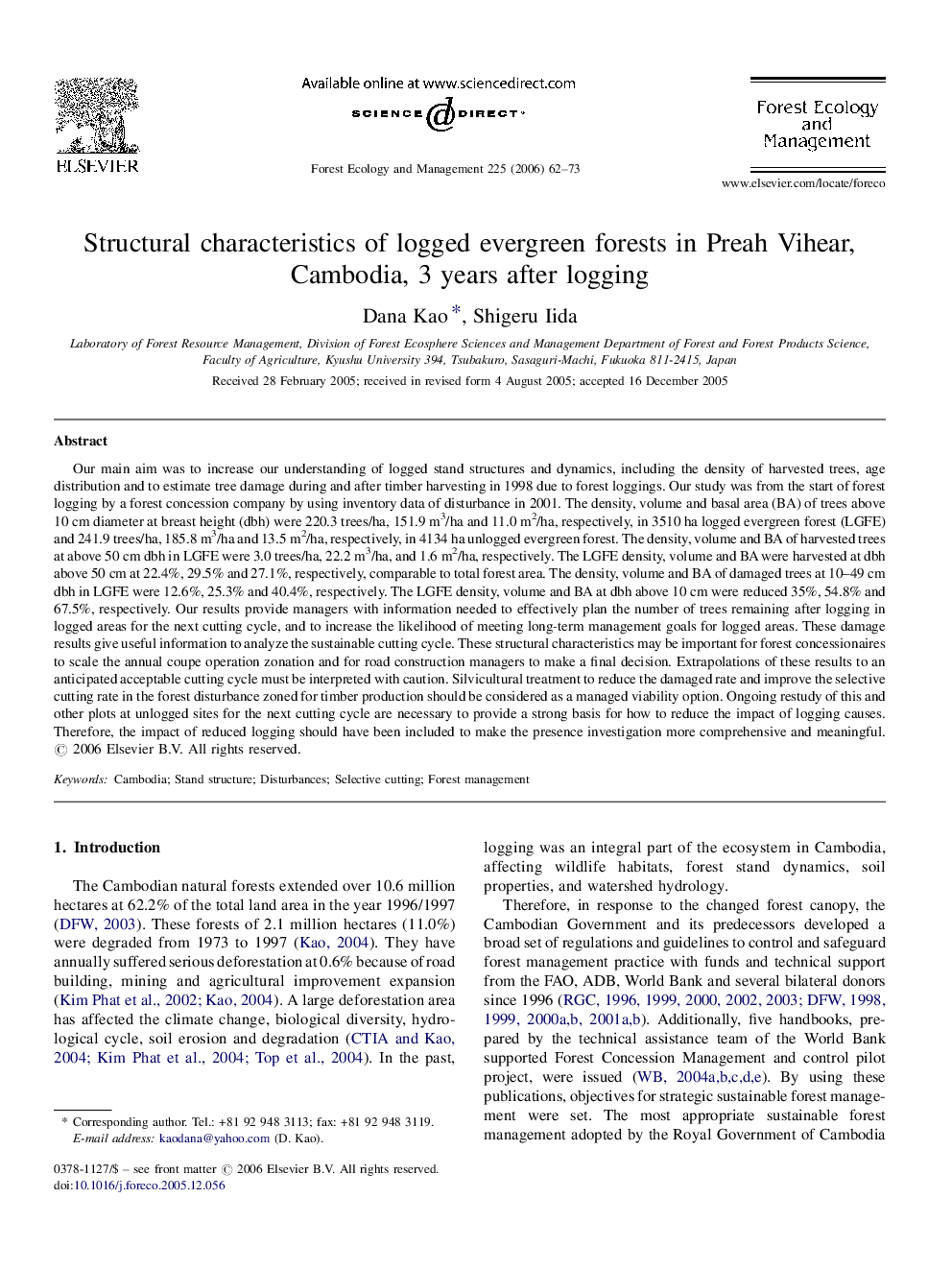| کد مقاله | کد نشریه | سال انتشار | مقاله انگلیسی | نسخه تمام متن |
|---|---|---|---|---|
| 91005 | 159424 | 2006 | 12 صفحه PDF | دانلود رایگان |

Our main aim was to increase our understanding of logged stand structures and dynamics, including the density of harvested trees, age distribution and to estimate tree damage during and after timber harvesting in 1998 due to forest loggings. Our study was from the start of forest logging by a forest concession company by using inventory data of disturbance in 2001. The density, volume and basal area (BA) of trees above 10 cm diameter at breast height (dbh) were 220.3 trees/ha, 151.9 m3/ha and 11.0 m2/ha, respectively, in 3510 ha logged evergreen forest (LGFE) and 241.9 trees/ha, 185.8 m3/ha and 13.5 m2/ha, respectively, in 4134 ha unlogged evergreen forest. The density, volume and BA of harvested trees at above 50 cm dbh in LGFE were 3.0 trees/ha, 22.2 m3/ha, and 1.6 m2/ha, respectively. The LGFE density, volume and BA were harvested at dbh above 50 cm at 22.4%, 29.5% and 27.1%, respectively, comparable to total forest area. The density, volume and BA of damaged trees at 10–49 cm dbh in LGFE were 12.6%, 25.3% and 40.4%, respectively. The LGFE density, volume and BA at dbh above 10 cm were reduced 35%, 54.8% and 67.5%, respectively. Our results provide managers with information needed to effectively plan the number of trees remaining after logging in logged areas for the next cutting cycle, and to increase the likelihood of meeting long-term management goals for logged areas. These damage results give useful information to analyze the sustainable cutting cycle. These structural characteristics may be important for forest concessionaires to scale the annual coupe operation zonation and for road construction managers to make a final decision. Extrapolations of these results to an anticipated acceptable cutting cycle must be interpreted with caution. Silvicultural treatment to reduce the damaged rate and improve the selective cutting rate in the forest disturbance zoned for timber production should be considered as a managed viability option. Ongoing restudy of this and other plots at unlogged sites for the next cutting cycle are necessary to provide a strong basis for how to reduce the impact of logging causes. Therefore, the impact of reduced logging should have been included to make the presence investigation more comprehensive and meaningful.
Journal: Forest Ecology and Management - Volume 225, Issues 1–3, 15 April 2006, Pages 62–73